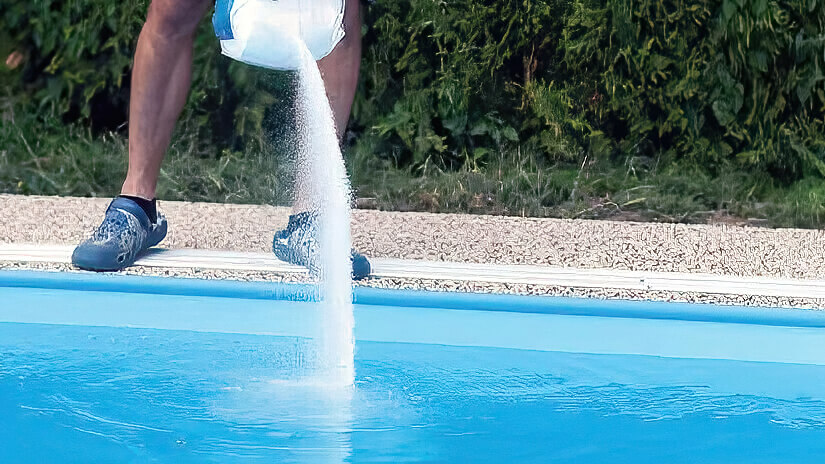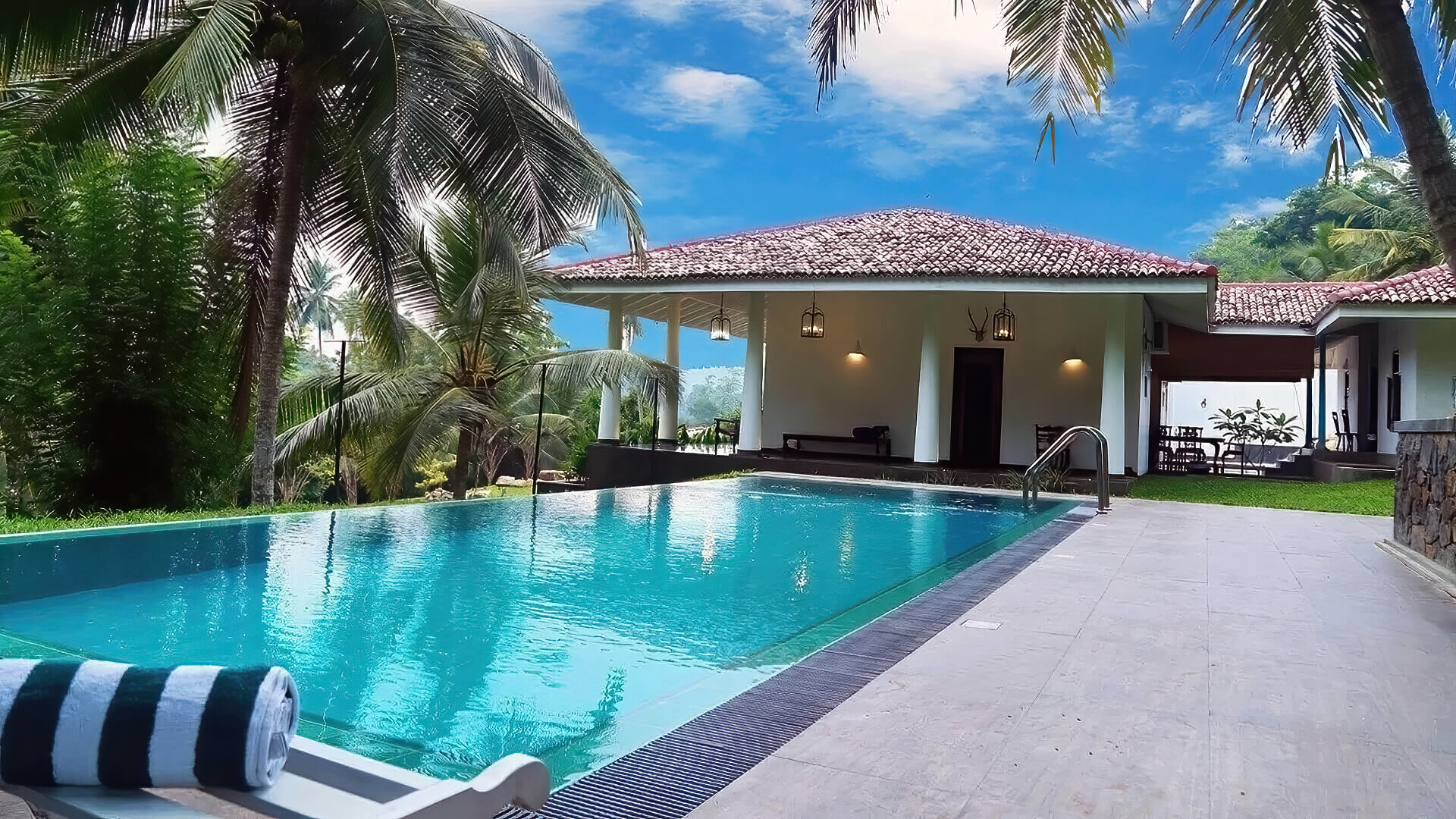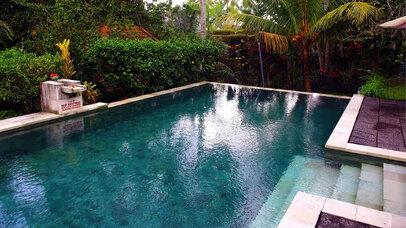Very few substances can beat the likes of chlorine when it comes to sanitising a pool.
At once, an oxidiser, sanitiser and disinfectant, a good quantity of chlorine in your pool can help preserve the water quality. This ensures that your pool remains clean and free from microorganism growth and helps protect swimmers' health.

However, there’s a catch. Chlorine is a highly volatile chemical, and mixing different types of chlorine can have disastrous consequences. That’s why we’ve curated this comprehensive guide to help you add chlorine to your pool safely.
The following will give you a clear idea of adding chlorine to your pool. At the same time, you’ll also get to know what precautions you need to take while undertaking the task.
So, let’s not dally and get going.
How To Add Chlorine To A Swimming Pool
The Importance Of Chlorine
The importance of chlorine as a swimming pool cleaner cannot be overstated. Swimming pools can get polluted due to both living and non-living contaminants. Apart from bacteria, pool water often becomes a cesspool for waste from bathing.
And this is precisely where chlorine can help you out. Chlorine helps to kill close to 100% of bacteria and algae, thus ensuring that your pool remains free of all infectious organisms. At the same time, it also acts as an oxidiser, helping to break down non-living contaminants.
However, breaking down oxidant waste reduces the amount of chlorine in a pool. For this reason, it’s essential to keep adding chlorine to a swimming pool regularly. The best-case scenario is to have enough chlorine to take care of both living and non-living contaminants.
Now that we know the importance of adding chlorine to a swimming pool let’s look at the steps you can take to add chlorine to your pool. We’ve divided the processes according to the type of chlorine you add.
Steps To Add Dry, Granular Chlorine
Adding dry, granular chlorine to a swimming pool is relatively straightforward. You must measure the chemical, dissolve it in a bucket or similar container, and add the dissolved chlorine around the perimeter. Take care never to add chlorine directly to the skimmer.

Dry chlorine usually comes in a few varieties, such as trichlor, dichlor and calcium hypochlorite. These typically dissolve quickly in water; however, care must be taken so that different types of chlorine are never mixed.
Before setting out to add chlorine to your pool, you’ll need to measure the pH and alkalinity of the pool water. You’ll also need a bucket or similar container to mix the chlorine, a stirring stick, and a graduated measuring cup. And yes, wear protective gear such as goggles and gloves. Now, let’s take a look at the steps to follow.
Step 1. Test The Water
First, you’ll need to test the pool water and determine the amount of free chlorine available. This will help you choose the amount of chlorine to add to the pool.
Step 2. Mix The Chlorine
Next, you need to take a bucket and fill it with three-quarters of the water from the pool. Then, add the required amount of chlorine granules to the bucket slowly. Once you’ve added the chlorine, you’ll need to stir the powder to ensure it dissolves completely.
Why is this important? Because adding undissolved chlorine to the pool can result in cloudiness and harm the pool surface. That’s why it’s essential to ensure that the chlorine is diluted before adding it to the pool.
Step 3. Add The Chlorine To The Pool
Now comes the actual part, where you add chlorine to the pool. Here, you must slowly add chlorine to the pool around the perimeter. Never add the chlorine solution directly to the skimmer.
Steps To Adding Chlorine Tablets To A Pool
Chlorine is also available in tablet form, and these require a feeder mechanism for regulating the dissolution rate of the tablets. However, it’s essential to use the correct type of tablet with a feeder; otherwise, it can lead to severe accidents. How many tablets you need will depend on the type and size of your pool.
If you’re using trichlor tablets, never add them directly to the skimmer since they are highly acidic. Also, we don’t recommend using chlorine floaters to add chlorine to a pool, which can harm the swimmers' skin. Also, follow the direction and measurements not to add too much chlorine.
Steps To Add Chlorine Liquid
Adding liquid chlorine is much easier, as the chlorine here is already dissolved. You must measure the chlorine required and slowly pour it around the pool’s perimeter. Another method to add liquid chlorine to your pool is to pour the chlorine on an inlet responsible for pumping water into the pool.
A Word Of Caution
Before you add chlorine to your pool, we’d like to reiterate the need to wear protective gear. Chlorine can harm your skin and cause severe problems if it gets into sensitive organs such as the eyes.
When handling chlorine, you must always wear protective clothing such as gloves, goggles and aprons. Also, exercise caution when handling the pool chemicals; don’t let it get onto bare skin.
Getting The Chlorine In Your Pool Right
Chlorine is vital for maintaining the quality of your pool water. After going through the above steps, we hope you don’t have any doubts about adding chlorine to your pool. Remember that a backyard pool’s chlorine concentration will differ from an indoor pool's.
That being said, we realise that the process does involve a certain amount of risk. That’s why, if you don’t want to undertake the task yourself, you should employ professionals to get the job done. This will not only save you time but also ensure your safety.
If you need help from a professional pool builder in Sydney, contact us today for expert advice.
That’s all we have to say for today. We hope this is helped you with how much chlorine to add to your pool and the importance of maintaining chlorine levels. Till next time!



